Despite the Ram 3500 dually's impressive payload and towing capacities, some truck enthusiasts like to accentuate the vehicle's appearance using bigger tires. So, for those looking for the biggest tires that you can fit on a stock Ram 3500 dually truck, this article is perfect for you. Here's what our research has found.
For the current 4th-generation Ram 3500 dually, you can fit tires with an overall diameter of 33 inches and a tread width of 10 inches. These bigger tires will fit on the stock rims using stock suspension and without any rear wheel spacers.
Would you like to know more about the bigger tires that can fit nicely on a completely-stock Ram 3500 dually? Do read on, because we also added some tips about the benefits and drawbacks of upsizing your truck's tires.
Best Tires For Ram 3500 Dually
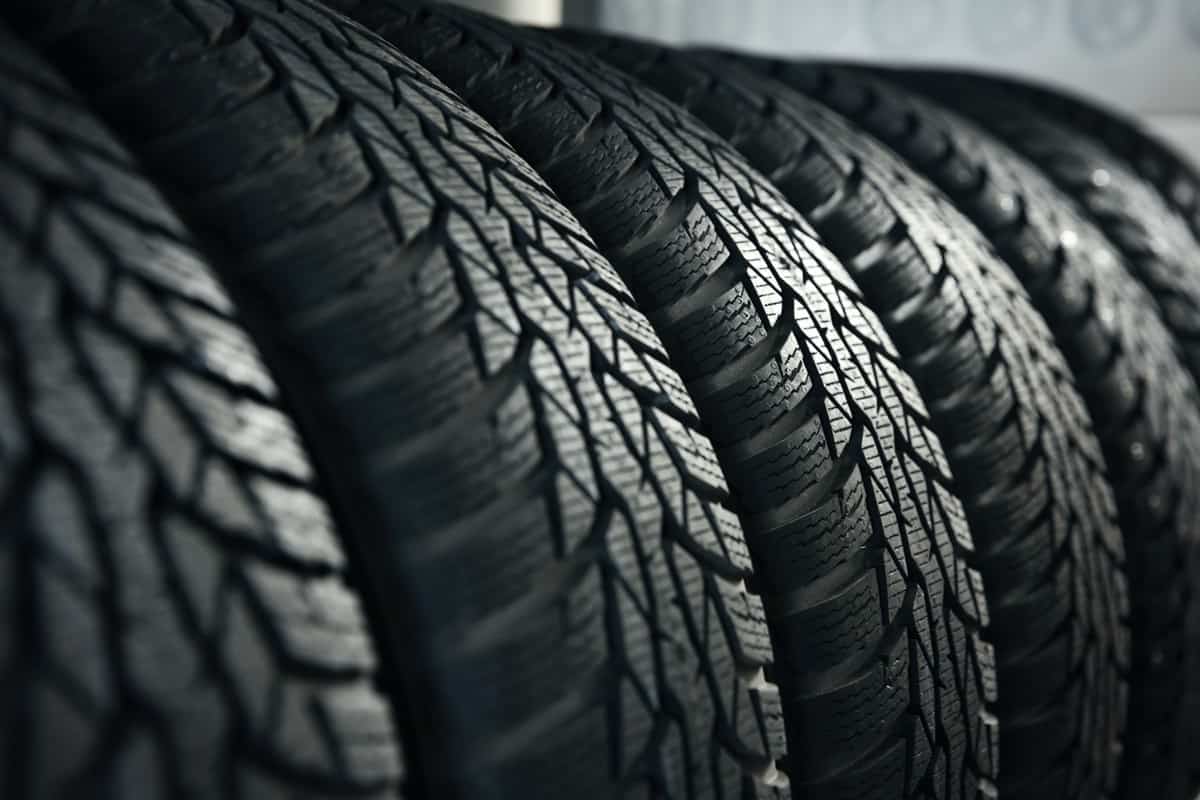
Although the "1-ton" vehicle classification traditionally meant that a vehicle could carry a ton of payload, the term still applies to newer, more powerful models today. Even though they fall under the 1-ton segment, today's 3500 trucks have the power and design to carry almost four tons of payload.
A big factor for the Ram 3500 truck's high payload rating is the option for dual rear wheels (DRW), colloquially known as the Ram 3500 "dually." With four tires under each rear wheel well, the Ram 3500 dually can carry more payload than the 3500 single rear wheel (SRW) option.
Some Ram 3500 owners, however, wish to modify their trucks' stock tires to highlight the vehicle's ruggedness and utility. Aside from practical hauling and towing performance, these enthusiasts also want bigger tires that give a more aggressive stance and higher ground clearance.
So what size are the biggest tires that you can fit on a stock Ram 3500 dually?
According to Ram 3500 owners themselves, you can fit tires with a maximum overall diameter of 33.1 inches and a maximum tread width of 10 inches.
Best Tire Size For Ram 3500 Dually
For 2022, the Ram 3500 DRW comes with stock 235/80/R17 all-season or optional off-road tires with the same tire size specifications. These tires are 31.8 inches in overall diameter and 9.3 inches in width.
However, as mentioned earlier, the Ram 3500 dually has enough wheel well space and dual rear wheel clearance for 33.1-inch tires with 10-inch widths. Here are the bigger tire sizes that fall within the acceptable range.
- 255/75/R17 - overall diameter 32.1 inches, tread width 10 inches
- 255/80/R17 - overall diameter 33.1 inches, tread width 10 inches
If you wish to install bigger or wider tires, then you will need to install a spacer and/or a suspension leveling kit. Furthermore, you may need to do some fender trimming and torsion bars tweaking. Otherwise, the tires will most probably rub against the truck's body or against each other.
Aside from the wheel well clearance, the Ram 3500's biggest limitation in fitting bigger tires is the space between the dual rear wheels. If the new tires are too wide, then their bottom tire areas might rub together when you load up the truck bed heavily.
As a reminder, not all tire brands follow their published tire size specifications exactly. Before buying a whole set of new tires, you should always measure carefully to ensure a good fit.
How Do You Read A Tire Code?
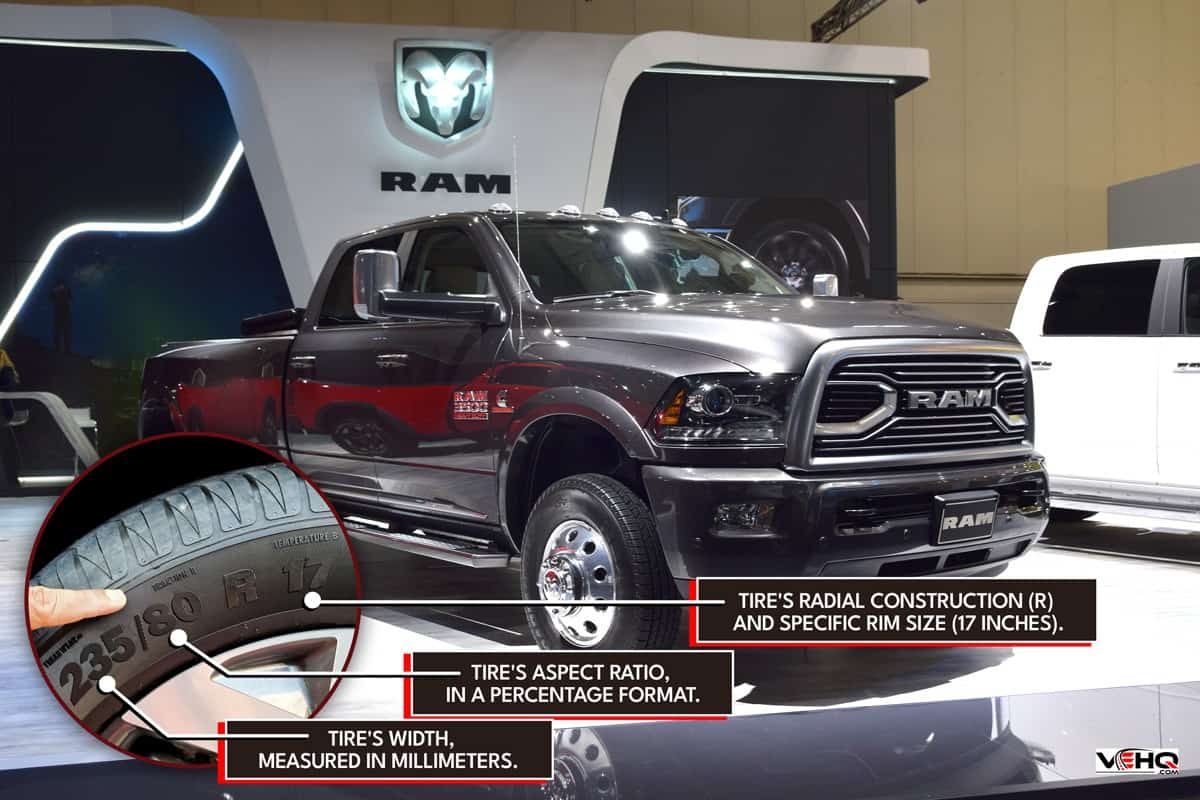
Almost all commercially-produced tires display their size specifications on the side walls. However, many people may not be familiar with what these numbers mean. For instance, let's take the stock 2022 Ram 3500 tire size: 235/80/R17.
- 235 pertains to the tire's width, measured in millimeters.
- 80 describes the tire's aspect ratio, in a percentage format.
- R17 refers to the tire's radial construction (R) and specific rim size (17 inches).
How Do You Figure Out The Overall Diameter Of A Tire?
We define a tire's overall diameter as the distance between two points on the tire's outermost circumference, with the measuring line passing through the tire's center.
However, we can't just go to our vehicle and measure the tires' dimensions directly. Instead, we need to follow some specific conditions.
- Mount the tire on its specified rim size
- Inflate the tire to its manufacturer-specified air pressure
- The tire should not bear any load, including the vehicle's weight.
- The tire should rest on flat, level ground during measurement.
How Do You Measure Tread Width?
Under the same conditions, when measuring a tire's overall diameter, we can also determine a tire's width. A tire's tread width, or simply tire width, is the perpendicular distance from one sidewall to the other.
Aspect Ratio Tire Size Meaning
In order to derive a tire's aspect ratio, we must have both the tire's "height" and tread width.
Tire height is also known as the "height" of the sidewall. The tire's sidewall height is the distance from the rim's outermost circumference point to the corresponding outermost point on the tire's circumference.
Once we get the tire's height, we can then divide this number by the tire's tread width. The resulting quotient, in percentage format, is our tire's aspect ratio. For instance, an aspect ratio of 80 means that the tire's sidewall height is 80% of the same tire's tread width.
Benefits Of Bigger Tires On Trucks
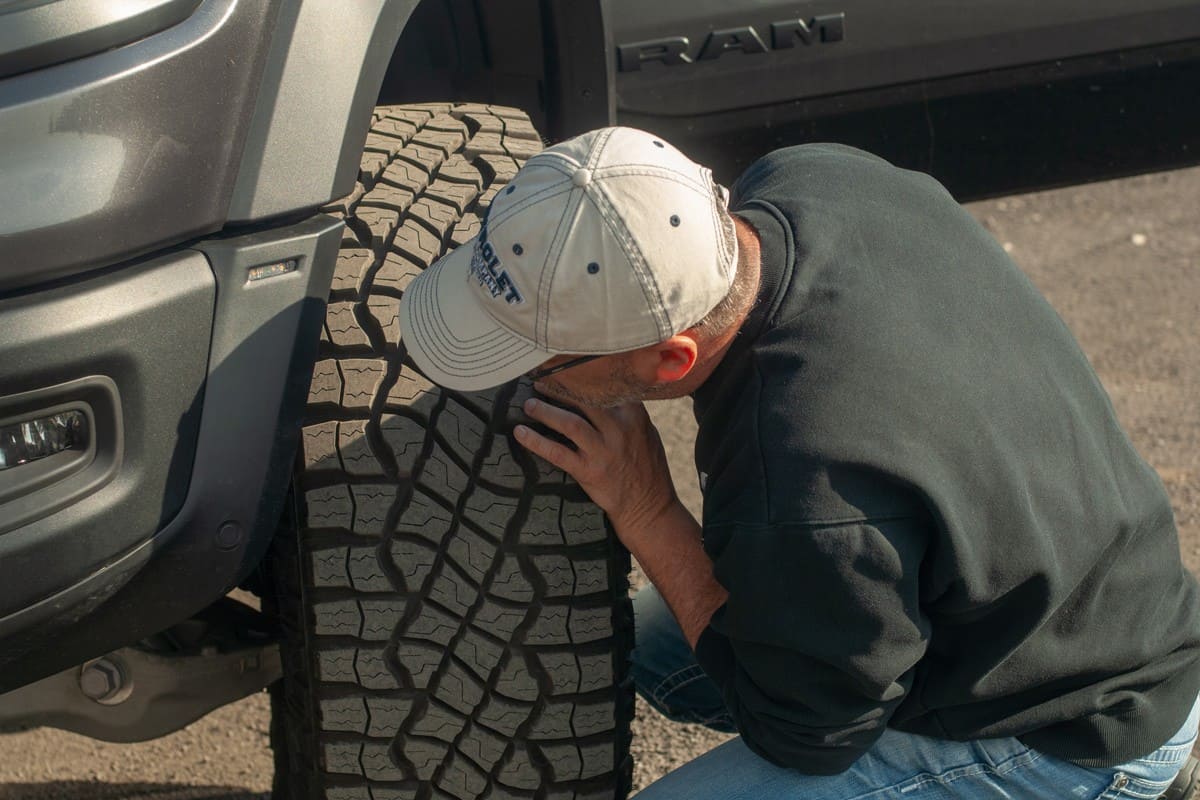
Many pickup truck enthusiasts change their stock tires to bigger ones to improve their vehicles' aesthetic appeal. Nevertheless, tire upsizing goes beyond better looks because it also has practical benefits.
Higher Ground Clearance
Even with stock rims and suspension systems, a set of bigger tires will increase a vehicle's ground clearance. Because of the higher ground clearance, the vehicle will also have a higher approach, departure, and break-over angle. Moreover, bigger tires also increase a vehicle's fording or wading depth.
In a nutshell, a higher ground clearance makes a vehicle more capable of tackling off-road trails and even flooded roads.
Better Traction
Wider tires have larger contact patches on the road surface. In turn, larger contact patches generate higher friction and better road traction.
By and large, wider tires increase the driver's vehicle control when going over muddy, sandy, snowy, or icy surfaces. Moreover, the wider tires' better traction makes the vehicle grip the road better during fast cornering maneuvers or even during highway cruising.
Better Ride Comfort
Holding the rim diameter constant, taller tires generally give passengers a softer ride. The taller tires' broader sidewalls can flex more than smaller tires, thus allowing for better impact and vibration absorption.
Is It Bad To Have Bigger Tires?
Although bigger tires have distinct advantages, they also have their trade-offs. Here are a few examples.
- Heavier steering - bigger tires with larger contact patches create more friction, especially during dry steering situations. You will likely notice this when you're trying to squeeze in and out of small parking spaces.
- Lower acceleration - bigger, heavier tires generate greater rolling resistance that the engine and transmission have to overcome to move the vehicle.
- Worse fuel efficiency - because the engine has to work harder to overcome the bigger tires' rolling resistance, your vehicle will consume more fuel than it used to with stock tires.
- Inaccurate speedometer and odometer reading - larger tires, especially those with bigger overall diameters, will move the vehicle farther with every spin compared to its stock tires. Speedometers and odometers calculate speed and distance traveled based on the rotation of stock wheel-and-tire assemblies. Hence, a bigger set of tires will "confuse" both gauges.
- Higher price tag - Generally, bigger tires cost more than smaller tires.
In order to minimize these drawbacks, tire experts recommend getting new tires within 3% of the overall diameter of the vehicle's stock tires. However, with some speedometer recalibration, some large trucks and SUVs can fit tires up to 15% bigger than stock tires.
What Kind Of Engine Does A Dodge Ram 3500 Have?
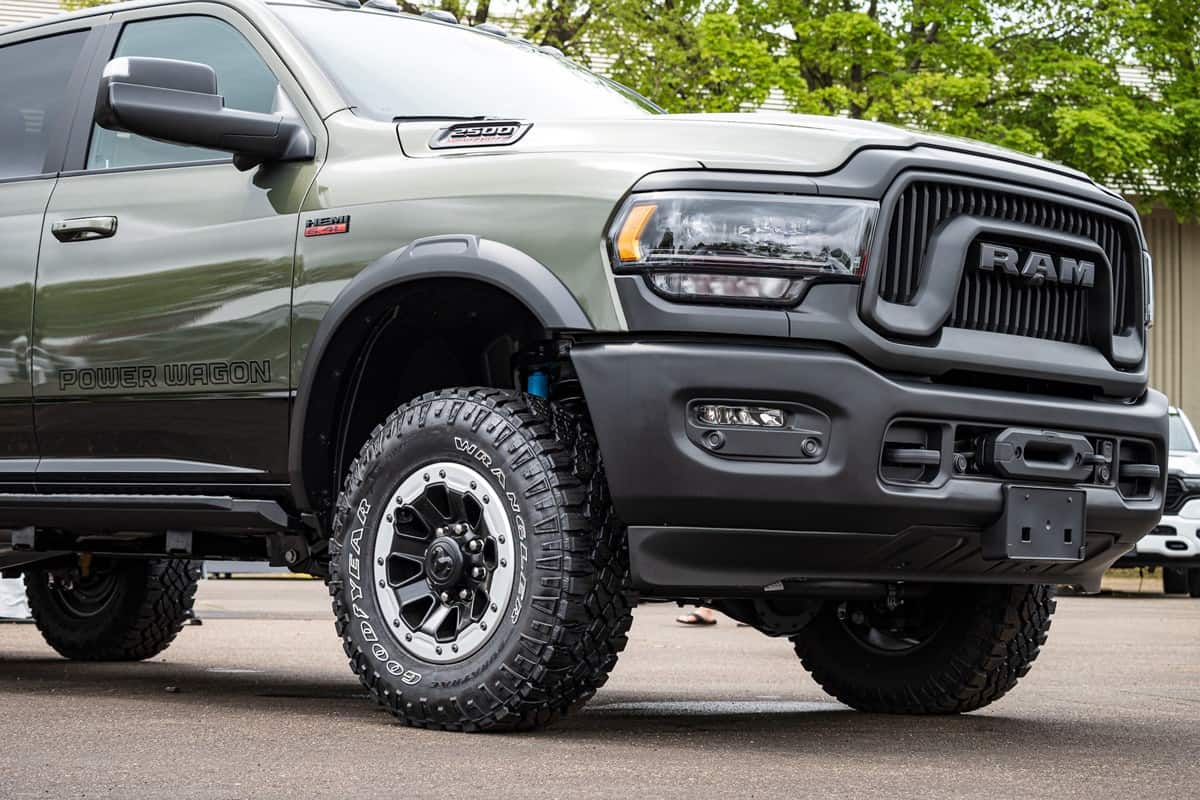
To give the Ram 3500 enough grunt to take on extremely challenging towing and hauling activities, Dodge gave the truck three potent engine options.
6.4-L HEMI V8
The 6.4-liter HEMI 392 gasoline engine comes as the base engine option for both the Ram 3500. Producing a class-leading 420 hp and 429 lb-ft of torque, this mill gives more than enough capability for the 1-ton Ram 3500 DRW.
For the current-generation Ram 3500, the 6.4-liter HEMI engine can provide 18,210 pounds of towing capacity and 7,690 pounds of payload capacity.
6.7-L I6 Cummins Turbo Diesel
For many diesel truck enthusiasts, the Cummins diesel engine brand is an iconic legend. The current 6.7-liter Cummins Turbo Diesel engine can provide the Ram 3500 truck a respectable 370 hp and 850 lb-ft of torque to allow it to perform its heavy-duty tasks.
Speaking of demanding work, this inline-6 Cummins engine can provide a properly-equipped Ram 3500 truck with an impressive towing capacity of 22,660 pounds.
6.7-L I6 High Output Cummins Turbo Diesel
To get the best-in-class towing capacity for the 3500 model, Ram made improvements to the 6-cylinder 6.7-liter Turbo Diesel mill to come up with a "High Output" model. Because of the improvements, this high-output engine can deliver significantly higher power at 420 hp and 1,075 lb-ft of torque.
Using the 6.7-liter Cummins high-output engine, the 2022 Ram 3500 boasts a class-leading towing capacity of 37,090 pounds and a respectable payload capacity of 6,570 pounds.
How Much Does A 3500 Dodge Ram Cost?
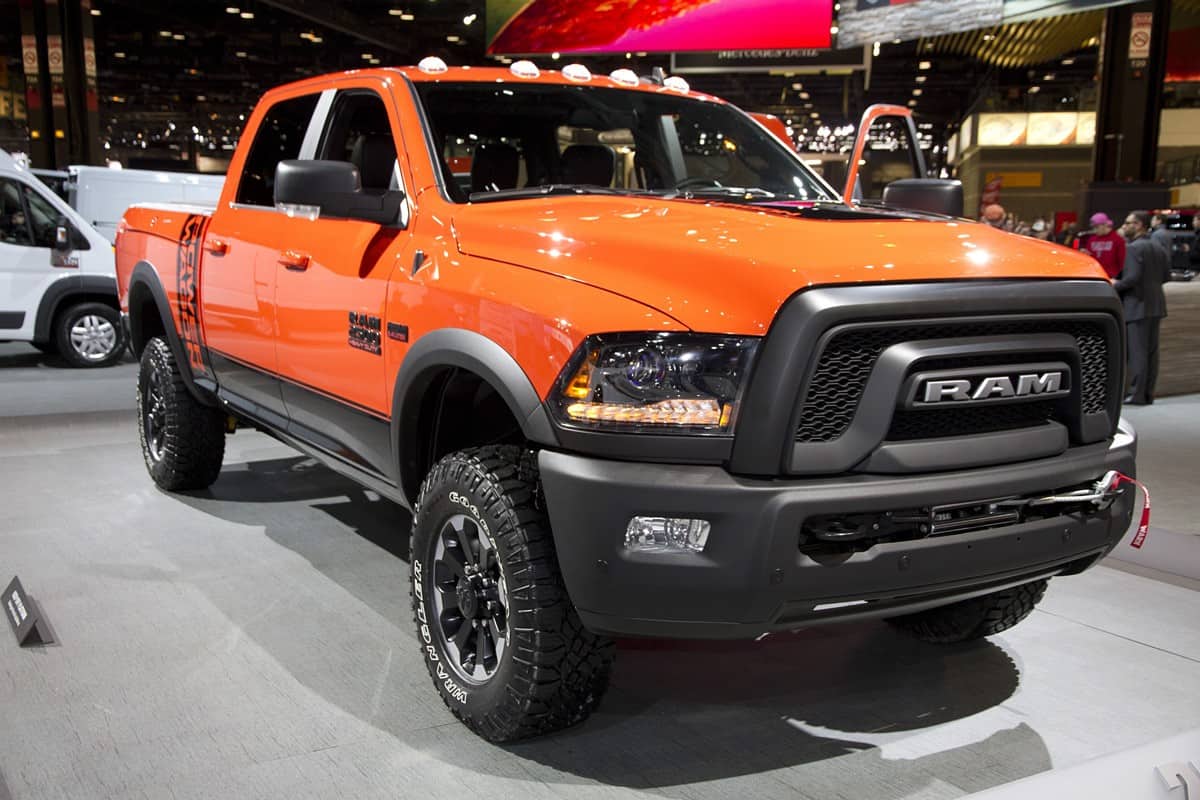
If you're in the market for a new 1-ton truck, then let us help you start your online window shopping. Check out the starting prices of the different Ram 3500 trims below.
- Tradesman: $46,310
- Big Horn: $50,530
- Laramie: $61,925
- Limited Long Horn: $69,500
- Limited Crew Cab: $74,315
These Ram 3500 prices are accurate as of December 2022.
Wrapping Up
Without modifying the rims, suspension, or truck body, a current-generation Ram 3500 DRW can accommodate bigger tires up to 33.1 inches in overall diameter and 10 inches in width. For stock 17-inch rims, the biggest tire size would be 255/80/R17.
Thank you very much for reading. We hope we were able to help guide you about your tire upsizing options for a stock Ram 3500 dually.
For more interesting reads about trucks and tires, you may check out these great articles.

I just saw in your article that “255/80/R17 – overall diameter 33.1 inches, tread width 10 inches” will fit on a 2022 RAM 3500 Dually. Is this just for the four rear tires or will this size fit for replacement on the front too? Thank you very much.